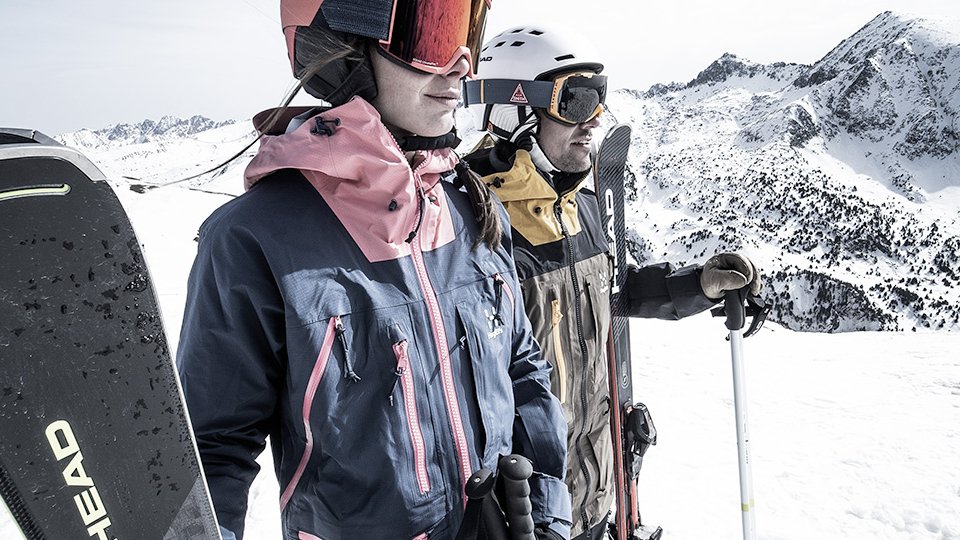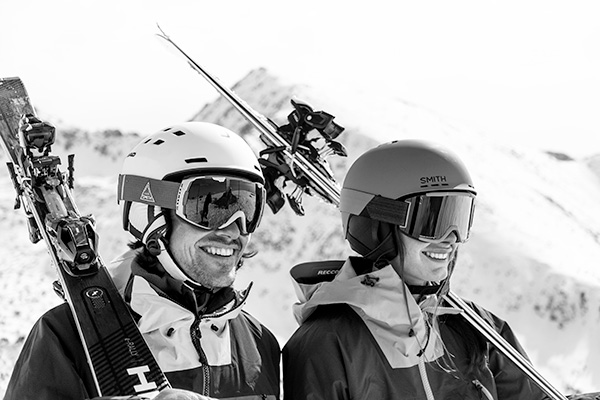
List of recommended safety equipment for skiing
For those who have never before been on a skiing holiday, it’s normal to have a couple of doubts before setting off, with questions such as ‘Is skiing dangerous for beginners?’ or ‘Do you require specialist safety equipment for skiing?’. The truth is that skiing is a very safe sport. In fact, ski injury rates are just 3.9 injuries per 1000 visitor days.
Of course, you’re even more likely to ski safely and to have the best ski protection if you have the right safety equipment for skiing. That’s why we’re putting together this list of recommended safety equipment for skiing so that you can visit one of the many beautiful ski resorts in Andorra and ski with extra peace of mind.

Safety tips for skiing: What are the four main devices of ski safety equipment that you need?
When it comes to ski equipment and what to wear while skiing, there are two categories to consider. The first is the basic checklist of what gear you need for skiing, the items that you need to take to the slopes whether they have anything to do with ski protection or not. The list of items you should take skiing includes:
- Skis, poles and bindings (which can be and often are rented at the ski resort)
- Helmet
- Goggles
- Boots
- Long underwear
- Thick socks
- Fleece
- Ski jacket
- Long trousers
- Gloves
- Neck gaiter or balaclava
Then there is the protective gear for skiing. In other words, the specific ski safety equipment that is designed for keeping you safe and that concerns issues such as back protection for skiing. With this four-point list of recommended safety equipment for skiing, we’ll provide a little more detail as to why each of these pieces of skiing safety equipment is important.
- Helmet and googles: These were also mentioned in the above list, because these are two of the most essential pieces of safety equipment for skiing. Logically, wearing a helmet provides protection against falling and hitting your head, while goggles are important for protecting your eyes from anything that might bounce up off the slope.
- Back protection for skiing: It is increasingly common for those on the slopes to be wearing some sort of back protection for skiing, even if the percentage of skiers who do so is still only around 10%. This is a type of wearable ski body armour and there are both hard shell and soft shell options.
- Knee, elbow and wrist pads: If you fall on the ski slopes, it’s likely that the first part of your body that will hit the surface will be a knee, elbow or wrist. That’s why it makes sense to look into ski protection gear for these joints.
- Sunscreen: Believe it or not, but it is very easy to suffer sunburn while skiing. Many people go on a holiday to a ski resort and ski safely all weekend, but then realise that they have done some damage to their skin. Even though most of it is covered by the thick clothes, some of your skin will still be exposed and that’s why sunscreen is actually one of the most important items for ski protection.
Safety stats for skiing: Is ski dangerous or is skiing safe?
As mentioned above, skiing is not very dangerous and is, in fact, a relatively safe sport. That is evidenced by the stat that puts ski injury rates at just 3.9 injuries per 1000 visitor days.
Still, by thinking about questions such as ‘How can I protect myself from skiing?’, you’ll make sure that you are even safer when out there on the slopes and this begins with making sure you’re bringing or renting the proper safety equipment for skiing.
The same goes for snowboarding. Many often wonder do pro snowboarders wear protective gear as well as pro skiers and the answer is yes, snowboarders also need protective gear to make the sport as safe as it can be.
